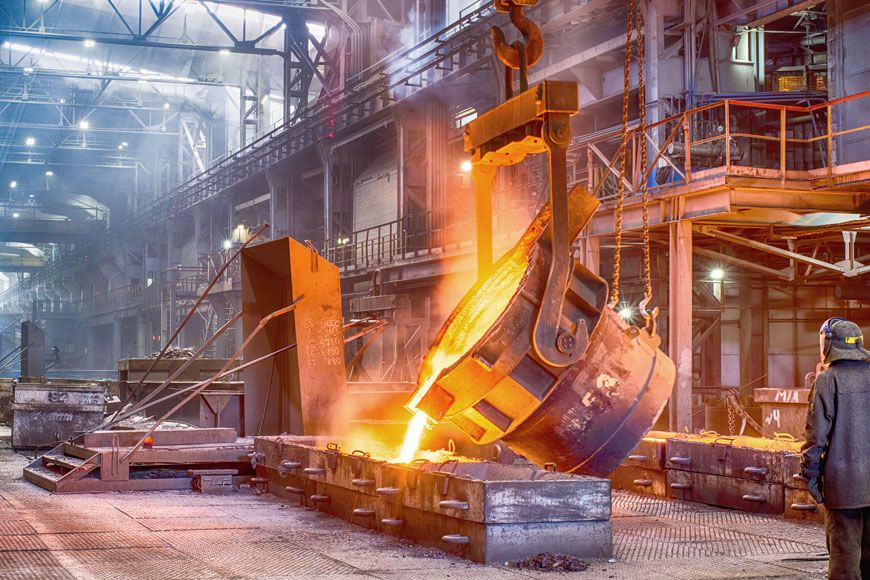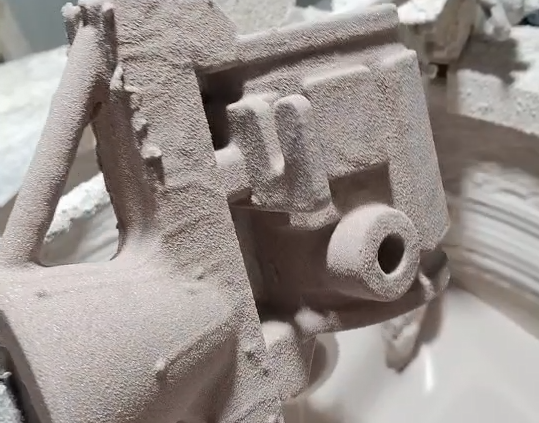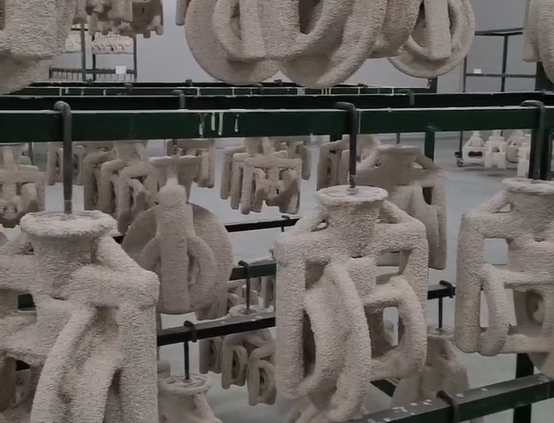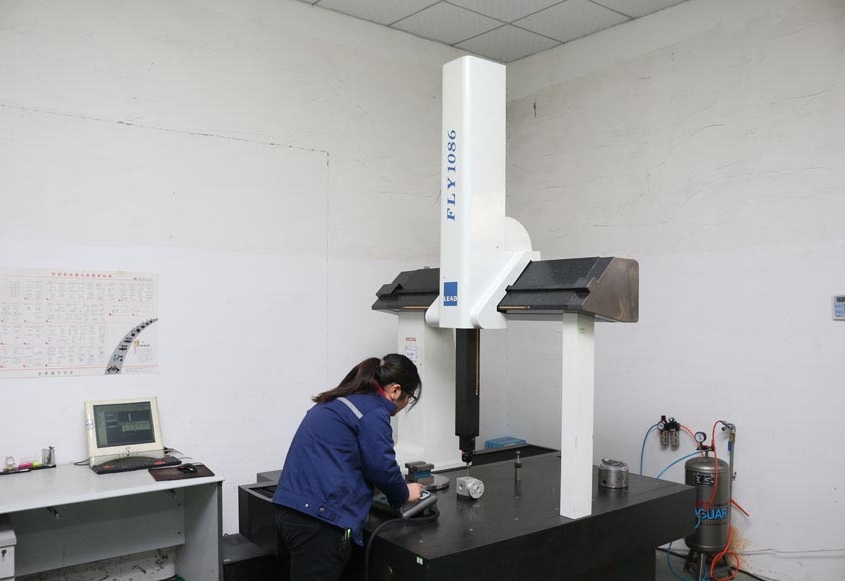Investment Casting
Investment casting, also known as lost wax casting or precision casting, is a process that has been practiced for thousands of years, with the lost wax process being one of the oldest known metal forming techniques.
Due to the complex structure in dimension and geometric, the investment castings are produced to reach net shape or near net shape, minimizing the need for secondary processes such as lathing, turning or other CNC machining process.
Investment casting is a manufacturing process that can be traced back over 5.000 years ago. From then, when beeswax formed the pattern, to today’s high technology waxes, refractory materials and special alloys, the lost wax casting ensure high-quality components are produced with the advantages of accuracy, repeatability, and integrity.
Investment casting derives its name from the fact that the pattern is invested. or surrounded. with a refractory material The wax patterns require extreme care for they are not strong enough to withstand forces encountered during the mold making.
Investment Casting Foundry
Shell Making During Investment Casting
What Lost Wax Precision Casting Can Achieve
Lost wax precision casting with silica sol as binder can achieve dimensional tolerance grades CT4~CT7 as specified in IS0 8062. We are fully equipped and automated process control can achieve consistency and repeatability of tolerances, with tolerances as small as ±0.1mm. Lost wax casting parts also have a wide range of sizes, from as small as 10mm long x 10mm wide x 10mm high, with a minimum weight of 0.01kg, to as large as 1000mm long and a maximum weight of 200kg.
Tianhui Machine is an industry-leading manufacturer of premium investment castings, committed to providing excellent quality, excellent value and an excellent customer experience. Tianhui Machine has extensive experience, technical expertise and quality assurance processes to continuously and reliably provide a wide range of castings and deep processing products.
*Maximum casting size: 1.000 mmx800 mmx800 mm
*Throwing weight range: 0.5 kg -200 kg
*Annual capacity: 3.000 tons
*Binder material for shell construction: silica sol, water glass or their mixture,
*Casting tolerance: CT4~CT7 in accordance with IS0 8062 or as per requirement.
Steps of Lost Wax Investment Casting
Investment casting is a multi-step process that produces near-net shape precision casting parts. The process begins with wax being injected into a die to create a pattern of the finished product. The patterns are then a fixed to wax runner bars to create the cluster.
During the investment casting process, a special machine dips the cluster repeatedly into a slurry to develop a ceramic shell. and then the wax is removed in a steam autoclave, Once the wax is removed, the ceramic shell is fired and then filed with molten metal to create the part. One advantage of investment casting is that the wax can be reused.
Investment casting (Lost wax casting process) requires a metal die (usually in aluminum), wax, ceramic slurry, furnace, molten metal and other machines needed for wax injection, sand blasting, vibratory tumbling, cutting, and grinding. The investment casting process mainly involves the following steps:
Shell Drying
1- Metal Die Making
Based on the drawings and requirements of the desired cast part, the metal die or mold, usually in aluminum, will be design and produced. The cavity will form the same size and structure of desired cast part.
2- Wax Injection
Also as known as pattern formation, Lost wax casting patterns are created by injecting molten wax into the metal die above.
3- Slurry Assembly
The wax patterns are then attached to a gating system, which usually is a set of channels through which a molten metal flows to the mold cavity. After that, a structure like a tree is formed, which is suitable for mass production.
4- Shell Building
The investment castings outer shell casing is built up through dipping into a ceramic bath and then immediately coated with sand for several times.
5- De-waxing
The inner cavity of precision investment casting is then dewaxed, which leaves a hollow outer ceramic shell layer. The hollows are just the same space as the desired castings.
6- Pre-Pouring Analysis
Pre-pouring analysis means that the foundry need to check and analyze the chemical composition of the molten metal to see if they are meet the require numbers or the standard. Some times, this analysis would be made several times.
7- Pouring and Solidification
The ceramic shell of the cavity should be preheated before pouring. This prevents impact and ceramic shell breakage after the hot liquid metal is poured into the cavity.
8- Sawing or Cutting
Once the metal cools and solidifies, the casting can be removed from the gating system tree cluster by shaking, cutting or friction sawing to separate the individual castings.
9- Shot Peening and Secondary Processing
The casting is then fully customized by grinding and additional heat treatment. Depending on the requirements of the exposed parts, secondary processing or surface treatment may also be required.
10- Packaging and Delivery
Before packaging and delivery, the lost wax casting parts will undergo comprehensive dimensional, surface, mechanical properties and other required tests.
How we test investment castings parts
·Spectroscopic and manual quantitative analysis
·Metallographic analysis
·Dimensional testing
·Coordinate measuring machine
·Brinell, Rockwell and Vickers hardness testing
·Mechanical property analysis
·Cryogenic and ambient impact testing
·Cleanliness inspection
·UT, MT and RT inspection
Static and dynamic balancing
Seal and pressure testing
Investment Casting Advantages and Alternatives
Investment Casting
*Precision and detail:
Investment casting can produce complex and highly detailed parts with excellent surface finish.
*Versatility:
Suitable for a wide range of metals, including ferrous and nonferrous alloys.
*Low material waste:
Because the mold is simply a thin ceramic shell, the process produces minimal material waste.
*Versatility:
Suitable for a wide range of metals and alloys, providing flexibility in material selection.
*Low Cost:
Initial tooling and setup costs are typically lower compared to investment casting and die casting, making it cost-effective for small to medium production batches.
*Large Components:
Suitable for casting large and heavy components due to the adjustability of the mold size.
*High Productivity:
Die casting is highly efficient for large-scale production and can cast complex parts at high speeds.
*Dimensional Accuracy:
It offers excellent dimensional accuracy and tight tolerances, making it suitable for precision components.
*Surface Finish:
Die casting produces parts with a smooth surface finish, reducing the need for additional machining.



